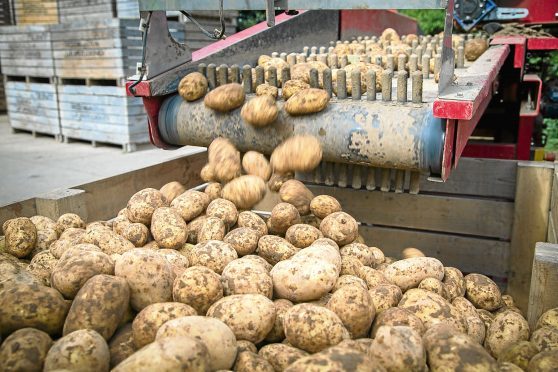A project assessing the use of precision farming technology to predict potato tuber size has been hailed a success.
The 12-month Tuberzone project was funded through the Scottish Government’s Knowledge Transfer Innovation Fund.
It was led by SAC Consulting, Brechin-based precision farming firm SoilEssentials and Montrose-based farmers’ co-operative Grampian Growers.
It set out to support the uptake of Tuberzone technology among growers on the east of Scotland from the Black Isle in the north to Angus in the south.
The technology uses a combination of GPS and satellite and drone imagery to monitor potato growth from crop emergence through the growing season to burn down.
It aims to help farmers predict tuber size and accurate burn-down time to maximise yields and profit margin.
During the project, the technology successfully predicted the graded-out size of Gemson – a salad potato variety owned by Grampian Growers – within 90% accuracy for the majority of growers involved.
Tuber size is critical for Gemson as only potatoes up to 45mm in size are useable for the salad market.
“The challenge of seed and salad potato production is knowing exactly when to stop the crop growing, and a few days either way can make a big difference to the total value of the crop,” said SoilEssentials managing director Jim Wilson.
“Tuberzone allows us to see what is going on under the ground and aids the decision on haulm destruction by giving an individual yield and size distribution for each crop over the next two weeks.
“This helps in deciding what date the crop needs to be burned down, taking into account the forecast weather conditions and how quickly the other potato crops are developing.”
He said the project also helped improve test digs. At present, growers make random test digs throughout the season and then weigh and measure tubers manually to predict size and when to burn down the crop.
GPS technology was used to help growers target the best location for these digs.
Forfar grower Matthew Steel from Craignathro Farm, who participated in the project, said: “The best moment was when we received the result sheets and discovered the model was only 5% out.
“Having such an accurate prediction before burning down the crop is really helpful for delivering what our customer wants, at the size and quality they want.”
